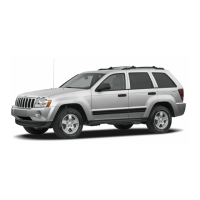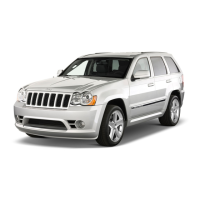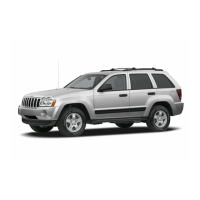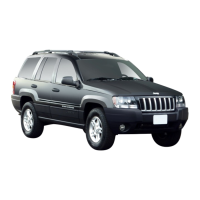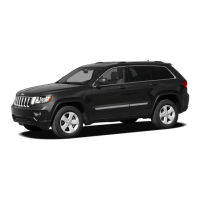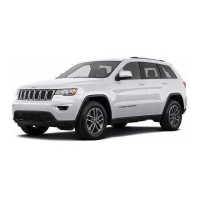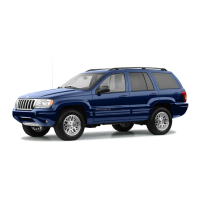
 Loading...
Loading...
Do you have a question about the Jeep 2004 Grand Cherokee and is the answer not in the manual?
| Brand | Jeep |
|---|---|
| Model | 2004 Grand Cherokee |
| Category | Automobile |
| Language | English |
Provides a general welcome and overview of the vehicle.
Details the higher rollover risk of utility vehicles and safe driving practices.
Guides users on utilizing the manual's table of contents and index for information retrieval.
Explains the importance of observing warnings and cautions for safety and vehicle protection.
Locates the VIN and explains its significance for vehicle identification and optional equipment.
Warns against modifications that could affect vehicle safety and roadworthiness, potentially causing injury.
Explains how to use the ignition key and its positions.
Details the function of the Sentry Key Immobilizer System to prevent unauthorized vehicle operation.
Explains the process and limitations for obtaining and programming replacement Sentry Keys.
Explains how to lock and unlock vehicle doors and the liftgate.
Explains manual locking and unlocking of vehicle doors.
How to use child safety locks on rear doors to prevent interior opening.
Describes the operation of the power door lock switch.
Explains the automatic locking feature based on vehicle speed.
How to use the key fob to lock/unlock doors and activate the panic alarm.
Importance of restraint systems and their components, including airbags and seat belts.
Information on the function and proper use of lap/shoulder belts.
Details the BeltAlert system for reminding the driver to buckle up.
Explains the vehicle's airbag system as a supplement to seat belts.
Covers adjustment and features of interior and exterior mirrors.
Guidance on adjusting outside mirrors for optimal visibility and overlap.
Covers manual and power seat adjustments for driver and passenger comfort.
Steps for adjusting the seat forward/rearward using the manual bar.
Explains how the system stores and recalls seat, mirror, and radio settings.
Overview of interior and exterior lighting systems and controls.
Details the system that automatically controls headlights based on light levels.
How to activate and use front fog lights.
How to operate the windshield wipers and washers.
Details the automatic detection and activation of wipers based on rain.
Explains the system for adjusting brake and accelerator pedals.
How to activate, set, and deactivate the cruise control system.
Location and components of the overhead console, including lights and EVIC.
Details the EVIC's display of messages and symbols for vehicle status.
Explains the TPM system for monitoring tire pressure levels.
How to access and customize vehicle features via the display.
Operation of the electrically powered sunroof.
Location and use of accessory power outlets.
Information related to the vehicle's cargo area features.
Information on roof rack usage, load limits, and installation.
Overview of the instrument cluster layout and its indicators.
Explains the voltmeter's function in monitoring battery voltage and charging system.
Explains the OBD II system's malfunction light and its implications.
Indicates engine coolant temperature and normal operating ranges.
General information about radio reception and signal types.
How to insert, play, and control compact discs in the CD player.
Introduction to the Sirius Satellite Radio service and activation.
Overview of the vehicle's heating, ventilation, and air conditioning controls.
How to adjust the blower fan speed.
How the dual-zone system automatically maintains comfort levels.
How to operate the rear wiper and washer system.
General steps to follow before starting the vehicle.
Steps to take if the engine fails to start, including dealing with a flooded engine.
Overview of the automatic transmission system and its operation.
Explains the function of each transmission gear range (P, R, N, D, Overdrive).
Overview of the vehicle's four-wheel drive systems.
Covers tire markings, inflation, rotation, chains, and safety information.
Where to find and what are the proper tire inflation pressures.
Warnings and advice for driving at high speeds with a loaded vehicle.
Recommended fuel type and octane rating for the vehicle.
Information on vehicle towing limits, safety tips, and towing packages.
How to use hazard warning flashers as an emergency warning system.
Steps to take to reduce overheating potential and what to do if the engine overheats.
Detailed instructions for changing a flat tire.
Instructions for safely jump starting a vehicle.
Manufacturer's recommendations for towing a disabled vehicle.
Covers engine oil, filters, belts, spark plugs, and emission systems.
Explanation of the OBD II system's role in monitoring vehicle performance.
Procedures for maintaining the cooling system, including coolant.
Maintenance of brake, power steering, transmission, and axle fluids.
How to care for the vehicle's body, paint, interior, and seat belts.
Location of fuses, replacement bulbs, and vehicle storage tips.
Table of fluid capacities and recommendations for fluids, lubricants, and parts.
Importance of scheduled maintenance for emission control system function.
Detailed maintenance intervals for severe operating conditions.
Detailed maintenance intervals for normal operating conditions.
Tips for getting service, preparing lists, and managing requests.
Details on warranty coverage, parts availability, and safety defect reporting.
Information on ordering additional vehicle manuals.
